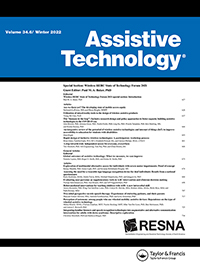Comparison of analgesic effects for the use of a brace and a brace with vibration for lateral epicondylitis of the humerus
Epicondylitis lateralis humeri, commonly known as tennis elbow, is a very common condition. It is a typically overload injury – it is caused by overloading the extensor muscles of the wrist and fingers. The pain is located on the outside of the elbow joint, where the tendons of the forearm muscles attach to the bony protrusion of the elbow. The most common conservative treatment is to place a brace below the site of pain to protect the tendons so that the injury does not worsen.
Researchers from the University of Medical Sciences in Iran decided to test the effects of using a brace in combination with vibration in patients diagnosed with lateral epicondylitis of the humerus.
- Pain, following the use of the brace with and without vibration, was significantly reduced, but the improvement was more significant with the brace with vibration.
- Also for muscle strength and range of movement in the overloaded joint, the use of a tourniquet with vibration had better results.
Based on:
Population
The study included 28 participants with lateral epicondylitis of the humerus.
Methodology
The subjects were tested for:
- pain intensity – pain was measured using a VAS scale (visual analogue scale)
- muscle strength of wrist flexors and extensors – using a digital dynamometer
- joint mobility – flexion and extension of the wrist and elbow – measured using a goniometer
Vibrotherapy
A local brace (forearm) with vibration was used for the study.
Result
Pain, after the application of the tourniquet with vibration, was much lower compared to the initial value, and also as to the value after the application of the tourniquet without vibration (P< 0.001). The results of the study show that the use of a tourniquet improves the strength of the flexor and extensor muscles of the wrist and has a beneficial effect on increasing the range of mobility in the examined joint. It should be noted, however, that the use of a brace with vibration produced much better results than a brace without vibration. Elbow flexor muscle strength (P = 0.04), elbow extensor muscle strength (P = 0.02), and range of mobility at the wrist joint (P < 0.001) after the use of the brace with vibration showed a significant increase compared to the initial values.
Commentary
Research clearly shows that for patients with lateral epicondylitis of the humerus treated conservatively with a brace, it is justified to use a brace that has an additional vibration function. This will significantly speed up recovery and help return to daily activities – already pain-free.



